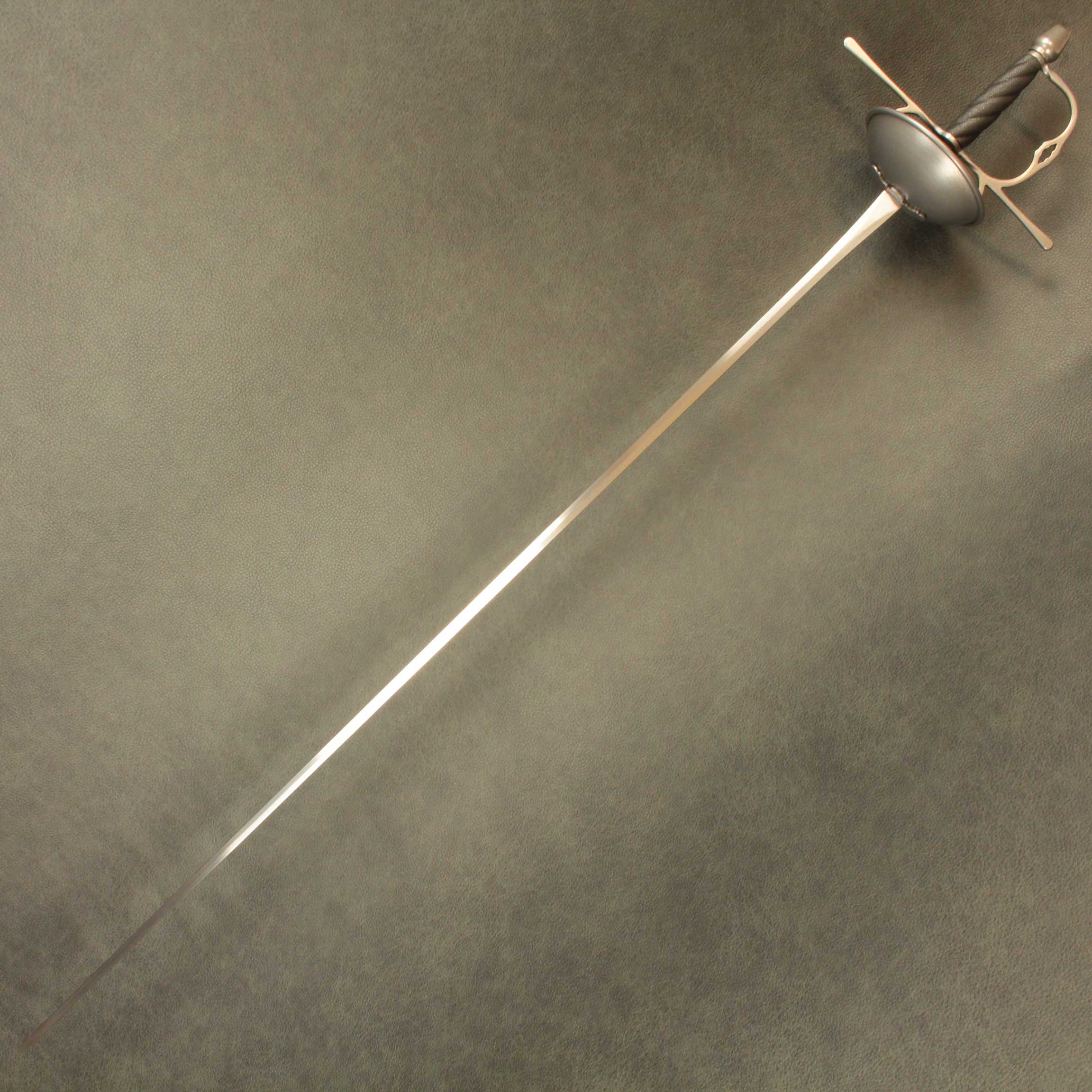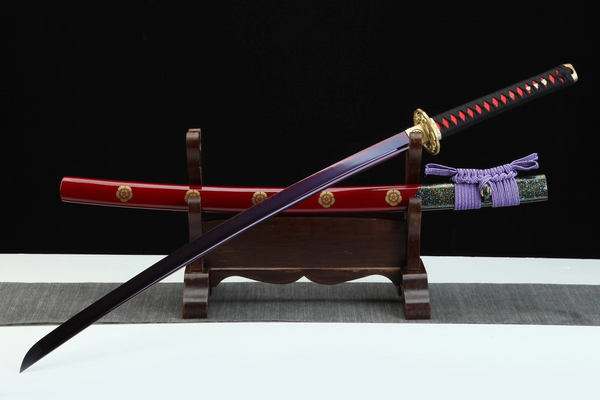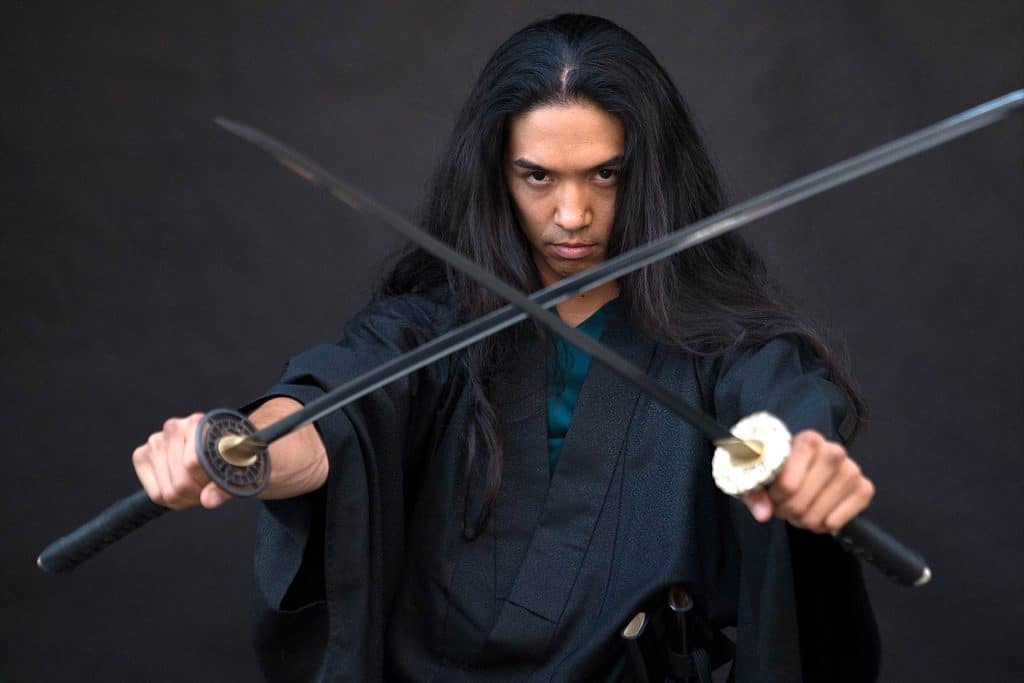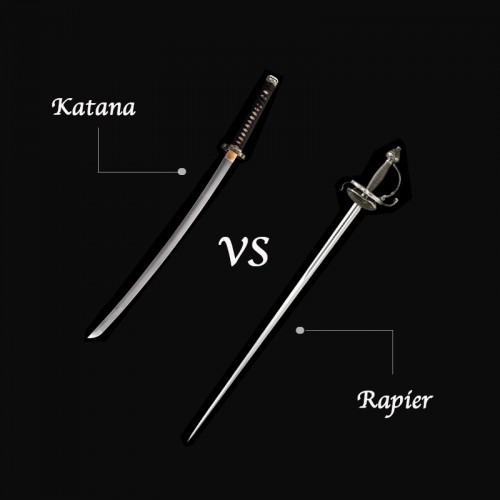Rapier vs Katana: An Unbiased Comparison
Posted by SwordsSwords on Oct 6th 2023
The rapier and katana are two of the most iconic swords in history, each strongly associated with different cultures and fighting styles.
For centuries, enthusiasts have debated which of these blades would prevail in a duel. While fantasizing about such hypothetical matchups can be fun, the truth is more nuanced.
Let's take an objective look at how these swords compare.
The Rapier's Origins

The rapier originated in Renaissance Europe as warfare evolved. Heavier medieval swords like arming and long swords proved less effective against new defenses like plate armor. Duelists sought a more agile alternative for self-defense and honor-based combat.
Into this need stepped the rapier. With a slender, sharply pointed blade averaging 2-2.5 feet long, it emphasized quick, precise thrusts using complex footwork. This allowed rapier users to efficiently target weak points in armor through the smallest openings.
Rapier Technique
Mastering the rapier was an art form requiring immense discipline and practice. Users had to develop lightning-fast reflexes to deliver killing thrusts while simultaneously defending against an opponent's rapier. Footwork involved intricate advances and retreats.
The most renowned rapier schools emerged in Italy, Spain, and Germany during the 16th century. Treatises detailed complex drills and techniques and established standard forms. At their best, rapier duelists became living works of art on the dueling field.
The Katana's Development

Across Eurasia, a different sword tradition emerged in feudal Japan. As the samurai class rose to power, they favored curved blades like the tachi for their versatility on and off horseback.
By the 16th century, the shorter katana design had gained favor. With a razor-sharp, gently curved 60cm blade mounted in an ornate hilt, it emphasized slashing cuts using swift drawing motions. Katanas were forged using a special steel-smelting process that made their edges renowned.
Katana Mastery

Wielding a katana demanded immense skill honed through endless practice from childhood. Samurai studied intricate forms (kata) that wove precise cuts, blocks and parries. Draw cuts were especially prized, executed with blinding speed.
Surviving manuals like the Nihonto Koshirae describe katana techniques in great detail. Masters attained superhuman reflexes and awareness through discipline. At their peak, samurai wielded their katanas as extensions of themselves in battle.
Rapier vs Katana

The rapier originated in Renaissance Europe as a lighter, more maneuverable alternative to the arming and long swords of the Middle Ages. Rapiers were designed for quick, precise thrusting attacks using complex footwork. Their slender, pointed blades were well-suited to piercing armor.
By contrast, the katana was the primary weapon of the samurai class in feudal Japan. Known for its razor-sharp cutting edge, the katana emphasized slashing and chopping motions. It had a stouter, curved single-edged blade about 60cm long mounted in a hilt called a tsuka.
The rapier's needle-like point gave it superior reach over the katana's shorter blade. However, the katana's thicker spine made it more durable and able to withstand misaligned impacts without damage. Its curved shape also focused force, making cuts more devastating.
Katana vs Rapier

While the katana was a versatile all-purpose sword, the rapier was highly specialized for dueling and self-defense. Its delicate construction was better suited to one-on-one combat than warfare. The katana, by contrast, was built to last on the battlefield.
That said, both weapons required extensive training to master. The rapier demanded precise footwork and lightning-fast thrusts. Katana technique involved intricate cuts, blocks and parries. A skilled user of either blade could overcome an untrained opponent.
Katana vs Samurai Sword

It's important not to confuse the general term "samurai sword" with the specific katana. Samurai employed several blade types depending on their role, including the tachi (worn blade-up), wakizashi (short sword), and naginata (polearm).
While the katana
became synonymous with the samurai, it only gained popularity during the early
modern Edo period. Before then, the tachi was the primary weapon. The katana
was essentially a shorter, simpler tachi optimized for warfare. Both used
similar steel-smelting methods that gave their blades renowned sharpness and
flexibility.
When comparing short sword vs rapier, short swords have broader blades and shorter handles for two-handed use in combat, while rapiers feature very narrow blades and longer handles tailored for precision thrusting during fencing or duels.
Can a Katana Cut Through Bone?
The extreme hardness and sharpness of a properly forged katana allows it to cut through targets most Western blades could not. With a skilled swordsman delivering a powerful downward stroke, a katana is certainly capable of severing limbs or cutting completely through small bones like those in the hands or feet.
However, size does matter. Thicker bones like in the arms or legs would require multiple strikes. And any cut that glances or is misaligned risks damage to the blade. Proper technique is essential. Overall, the Japanese katana sword is among the few swords historically proven to cut through bone, given a masterful hand wielding it.
Rapier vs Katana: No Clear Winner
In a real duel between these weapons, victory would depend more on skill than blade type. Both rapiers and katanas demanded years of specialized training. A rapier's quick thrusts could defeat an untrained katana user in a rapier vs katana duel, while a skilled samurai's cuts might overpower a duelist in a katana vs rapier matchup.
History provides no clear answer to which would win because much would rely on the individual duelists' abilities. Appropriately wielded, either blade could overcome the other in rapier vs katana or katana vs rapier scenarios. Their legacies are defined not by hypotheticals but their impacts.
In conclusion, comparing the rapier and katana involves more nuance than determining an absolute "winner." Both represented pinnacles of metallurgy and martial technique for their eras. Appropriately wielded, either could overcome the other. Their legacies are defined not by hypothetical matchups, but the real impact each had on the battlefield and dueling field.

